Affiliate links on Android Authority may earn us a commission. Learn more.
Google Pixel 3 / 3 XL vs Pixel 2 / 2 XL: A tale of four flagships
After weeks of rumors and leaks, Google officially announced the Pixel 3 and Pixel 3 XL. Neither smartphone is a surprise at this point, but they are welcome entrants in an Android smartphone market filled with worthy flagship contenders. Two of those contenders continue to be 2017’s Pixel 2 and Pixel 2 XL, thanks in large part to their cameras, consistent updates, and smooth-running versions of Android 9 Pie.
Don’t miss: Google Pixel 3 and Pixel 3 XL hands-on
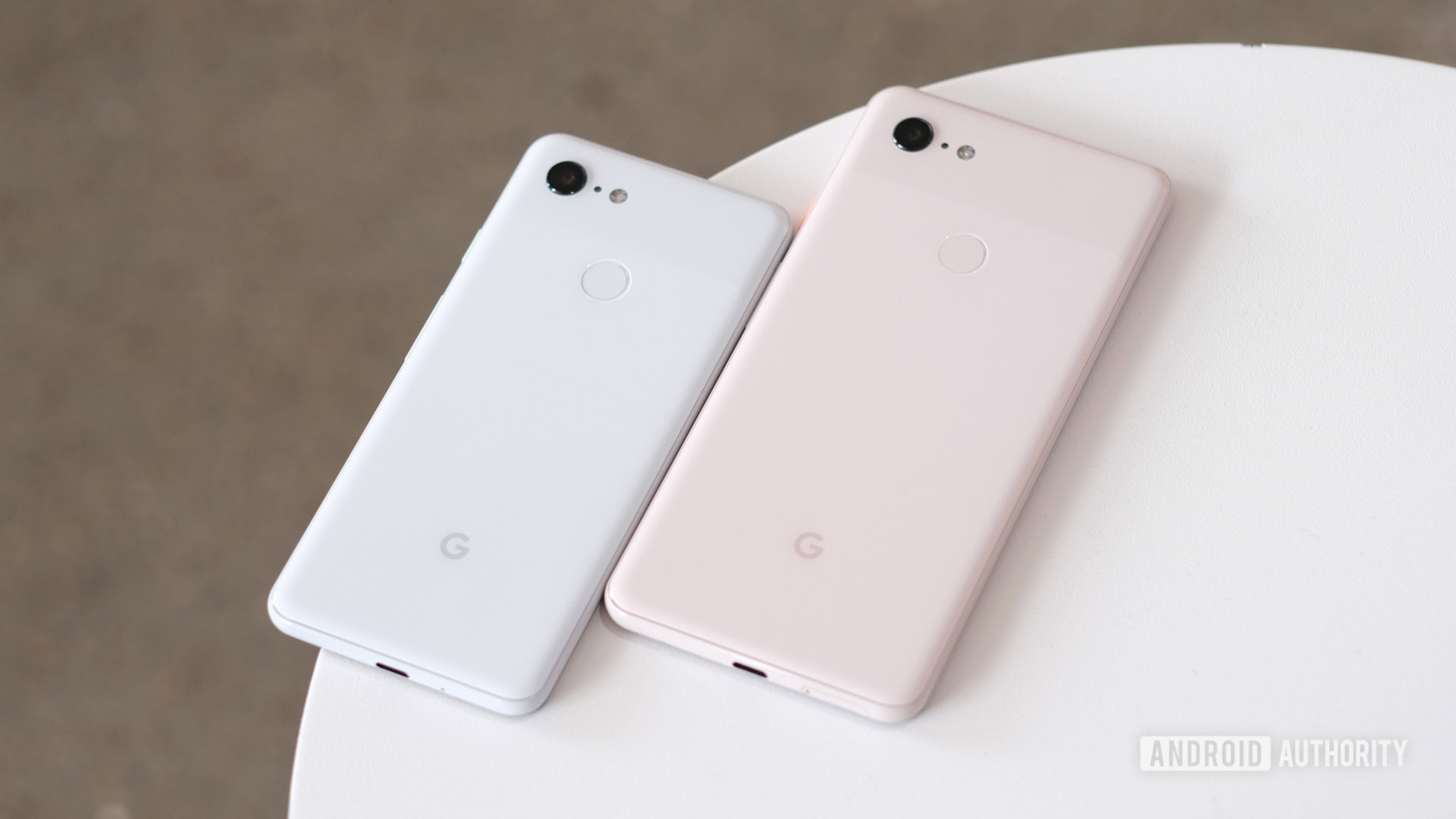
How the Pixel 3 and Pixel 3 XL fare against their predecessors, however, is a different story. On the one hand, the upgraded processors and improved displays mean the newer Pixel phones are a step above their predecessors. On the other hand, the software and cameras help the Pixel 2 and Pixel 2 XL keep pace more than you would think.
Read Next: Google Pixel 3 XL vs Google Pixel XL – Is it worth the upgrade?
Let’s take a deeper dive to see how 2017’s pair of Pixel smartphones compare to the new hotness.
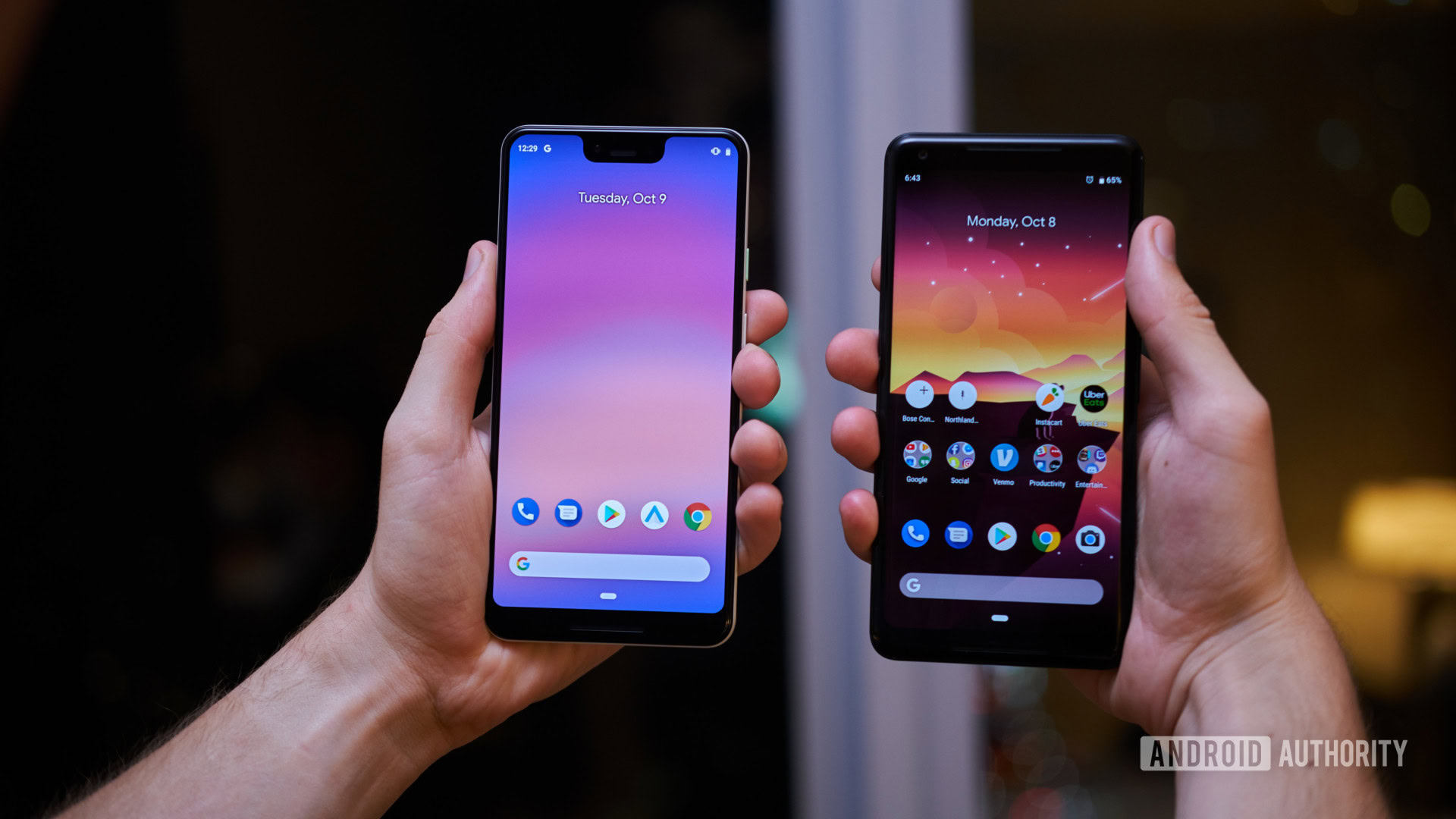
On the outside, you might think that nothing changed in the year since the Pixel 2 and Pixel 2 XL. Turn the new phones around, however, and things could not be more different. The Pixel 3 finally leaves behind the Pixel 2’s traditional 16:9 aspect ratio for a modern 18:9 display, though the former’s Full HD+ (2,160 x 1,080) resolution means slightly fewer dots per inch than the latter.

The more controversial change is with the Pixel 3 XL, which now sports a huge display notch up top and bumps the resolution up to 2,960 x 1,440. This compares to the Pixel 2 XL’s 18:9 display with 2,880 x 1,440 resolution. Even though the resolutions across the two displays differ ever so slightly, the same might not be said of the display quality. Whether it was burn-in, black crush, or something else, the Pixel 2 XL’s LG-produced display was plagued with enough problems to prompt Google to issue two-year warranties.
As evident with the V40 ThinQ, LG looks to have improved display quality by an appreciable margin relative to the V30’s. Here is hoping the same can be said of the Pixel 3 XL’s display relative to the Pixel 2 XL’s.
| Google Pixel 3 and Pixel 3 XL | Google Pixel 2 and Pixel 2 XL | |
|---|---|---|
Display | Google Pixel 3 and Pixel 3 XL Pixel 3 XL: 6.3-inch Flexible OLED 2,960 x 1,440 resolution 523 ppi 18.5:9 aspect ratio Gorilla Glass 5 Pixel 3: 5.5-inch Flexible OLED 2,160 x 1,080 resolution 443 ppi 18:9 aspect ratio Gorilla Glass 5 | Google Pixel 2 and Pixel 2 XL Pixel 2 XL: 6.0-inch P-OLED 2,880 x 1,440 resolution 538 ppi 18:9 aspect ratio Gorilla Glass 5 Pixel 2: 5.0-inch OLED 1,920 x 1,080 resolution 441 ppi 16:9 aspect ratio Gorilla Glass 5 |
Processor | Google Pixel 3 and Pixel 3 XL Qualcomm Snapdragon 845 | Google Pixel 2 and Pixel 2 XL Qualcomm Snapdragon 835 |
GPU | Google Pixel 3 and Pixel 3 XL Adreno 630 | Google Pixel 2 and Pixel 2 XL Adreno 540 |
RAM | Google Pixel 3 and Pixel 3 XL 4GB | Google Pixel 2 and Pixel 2 XL 4GB |
Storage | Google Pixel 3 and Pixel 3 XL 64/128GB No microSD slot | Google Pixel 2 and Pixel 2 XL 64/128GB No microSD slot |
Elsewhere, the differences are not quite as stark. The upgrade to the Snapdragon 845 for the Pixel 3 and Pixel 3 XL is a welcome change, though the Snapdragon 835 in the Pixel 2 and Pixel 2 XL is running along just fine. Where the processor difference really matters is with software optimization, something that Google has increasingly become known for since the original Pixel and Pixel XL.
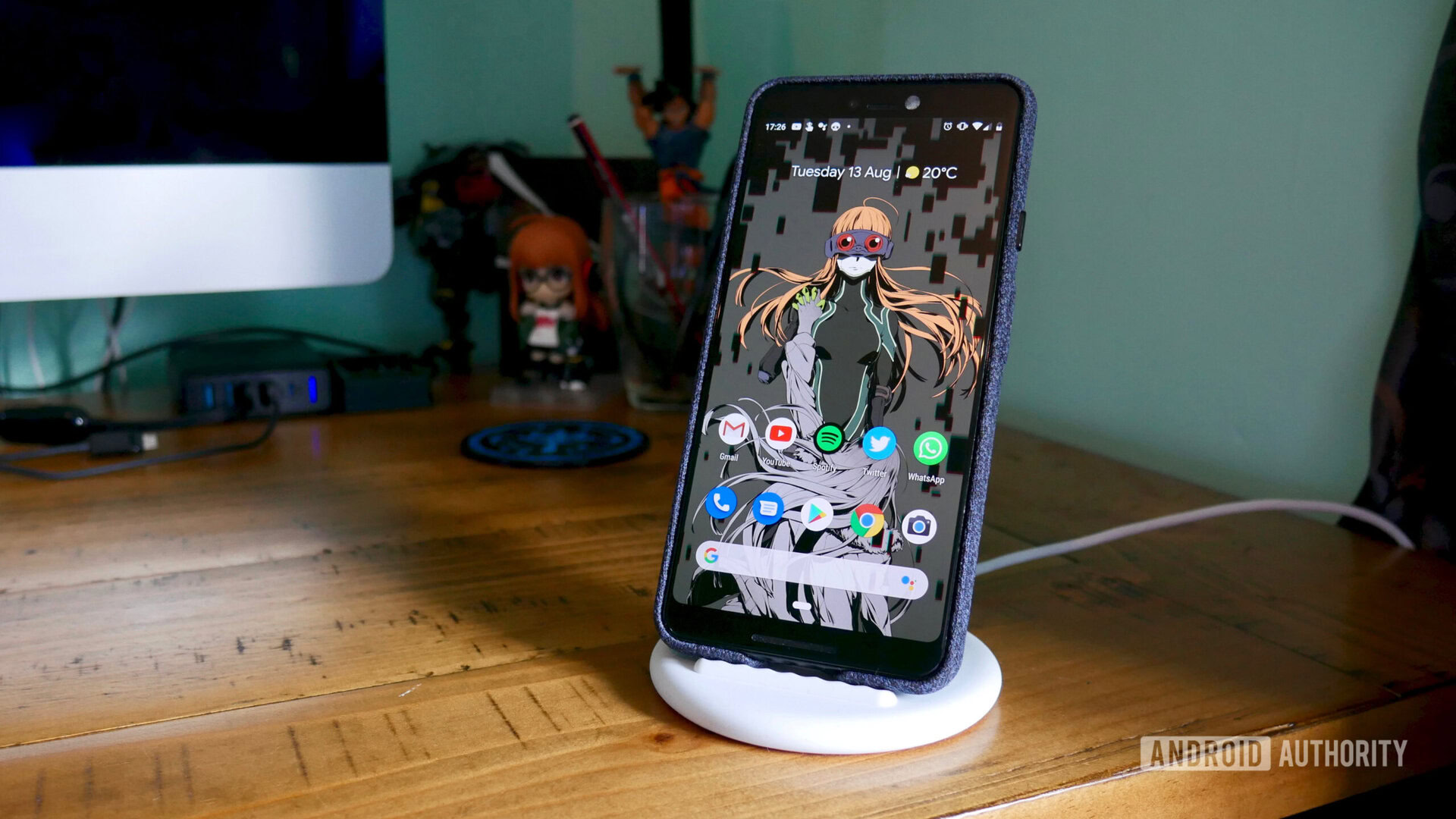
One of the biggest pain points, however, is with the RAM amount. We are not saying that 4GB of RAM is a low amount, but keep in mind that you can pick up the Galaxy Note 9 and OnePlus 6 with either 6GB or 8GB of RAM. 2018 has been the year of Android smartphones with 6GB of RAM, but the Pixel 3 and Pixel 3 XL did not get the memo.
Making matters worse, the Pixel 2 and Pixel 2 XL also feature 4GB of RAM. Again, 4GB of RAM is not a bad number to aim for, particularly if the software does an excellent job with RAM management. Still, we would have liked just a bit more in 2018.
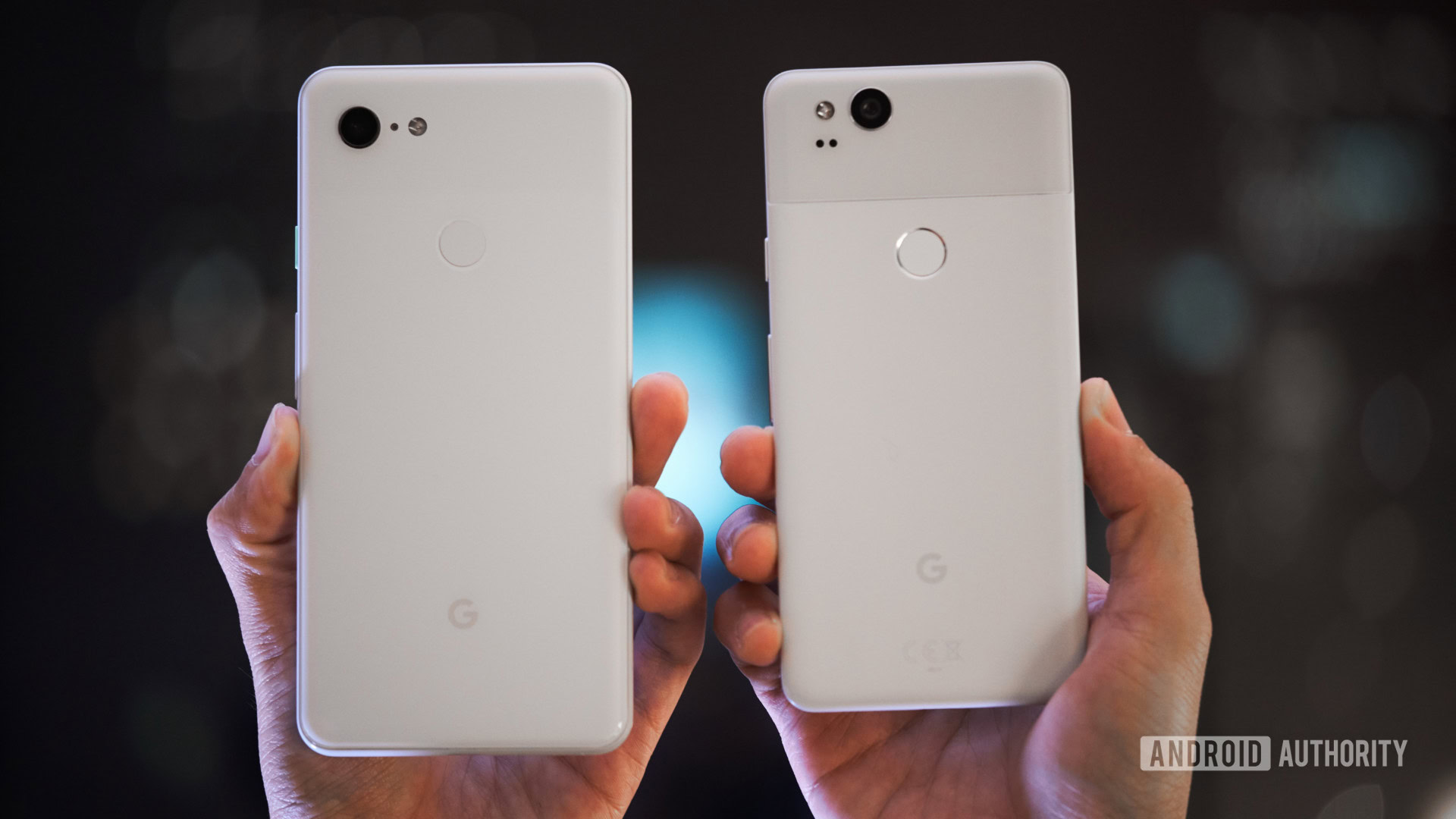
Storage amounts also remain consistent across all four smartphones, with 64GB or 128GB options available for everyone. Keep in mind that none of these phones feature microSD card slots for expansion, so you are stuck with whatever storage amount you choose. The free Google Photos storage certainly helps, but it will not do you much good if you are someone who has a big library of music, podcasts, and videos.
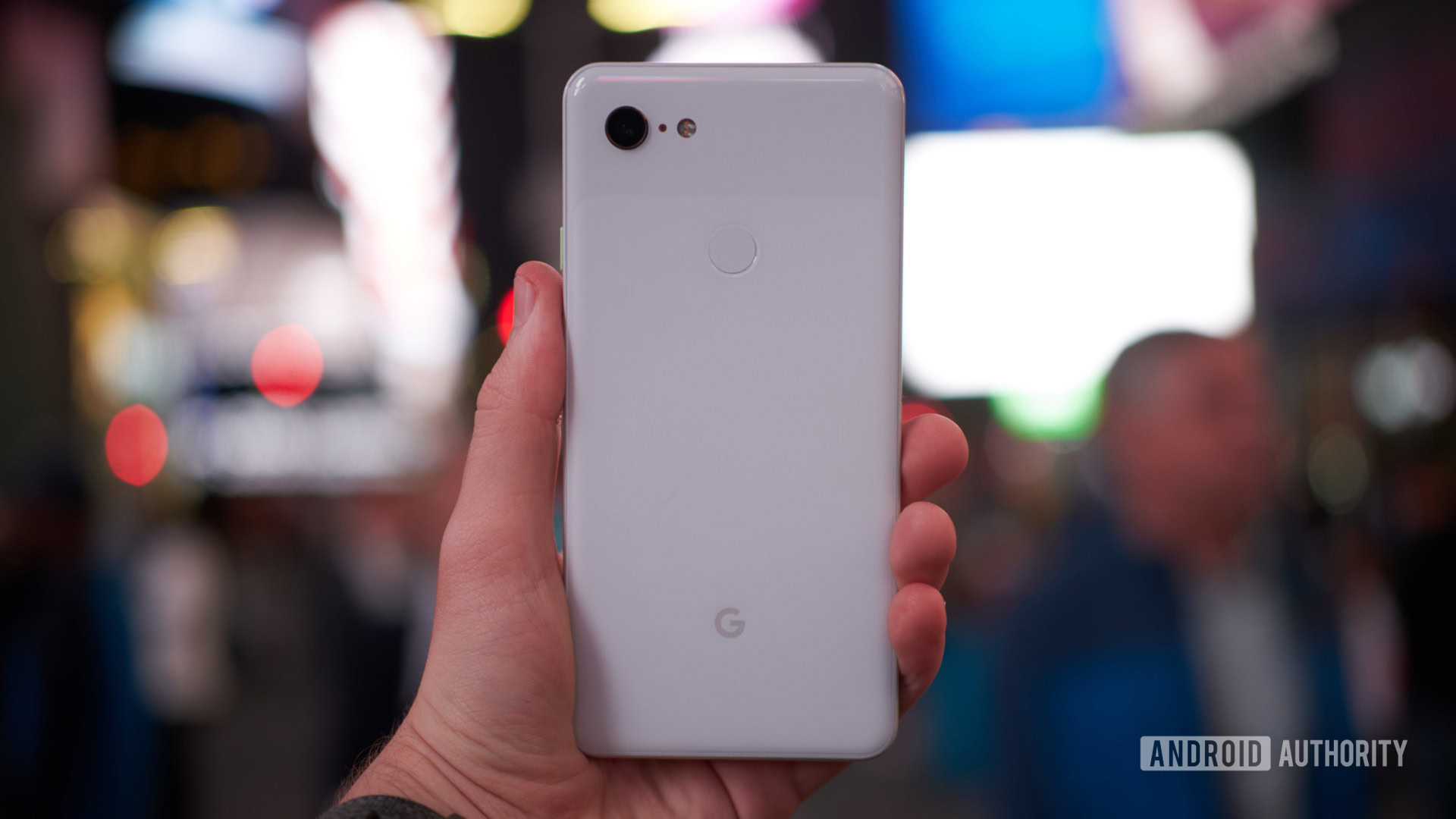
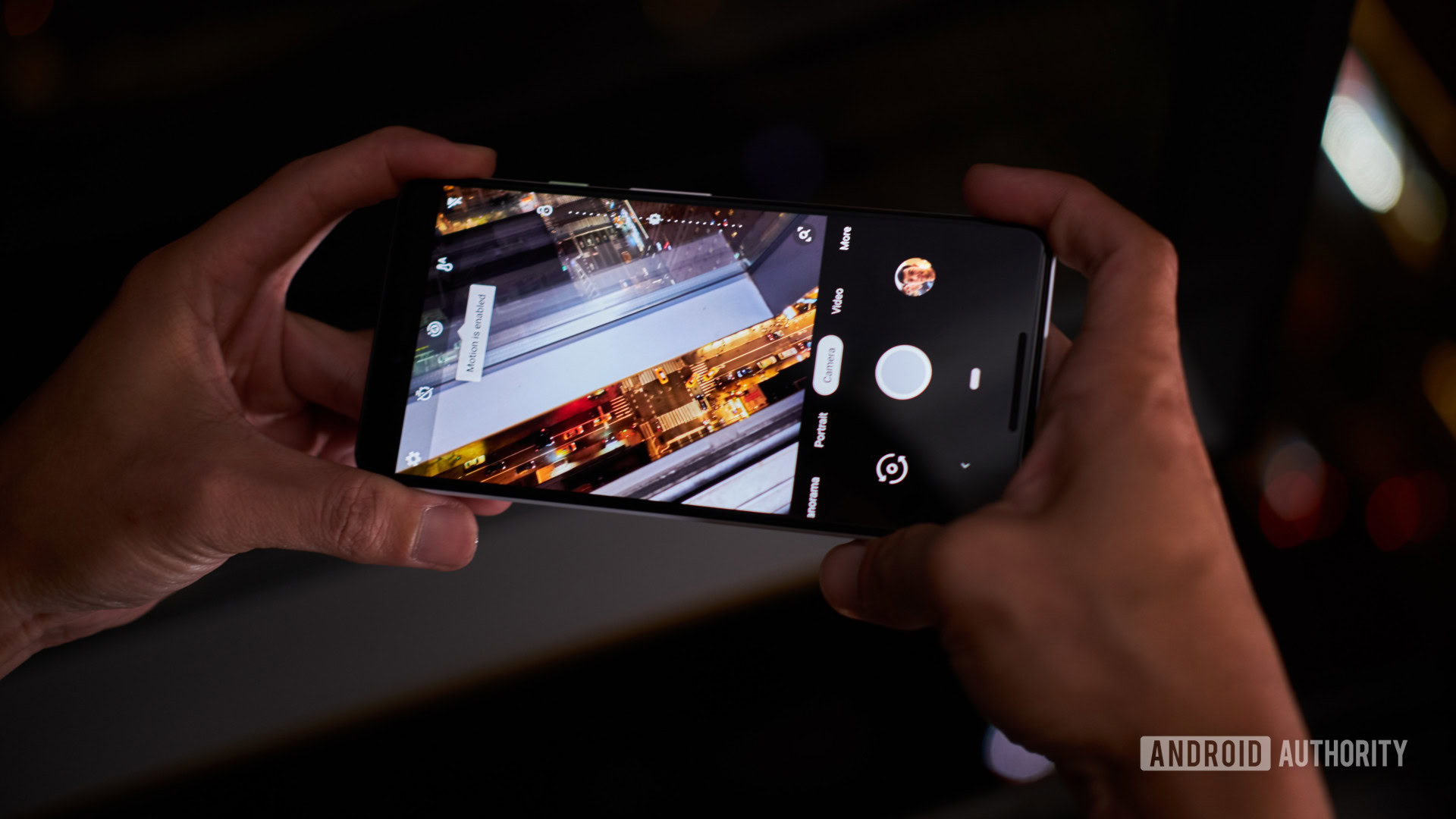
Moving on to the cameras, the Pixel 3 and Pixel 3 XL do not move the needle very much when it comes to on-paper specs. Each of the new Pixel phones feature one 12.2MP camera, whereas other manufacturers feature two or even three cameras on their smartphones. The Pixel 2 and Pixel 2 XL also each feature one 12.2MP camera.
The idea is that Google’s camera software engineering is good enough to forgo the need for a second main camera. That idea has held up very well with the Pixel 2 and Pixel 2 XL, which continue to be two of the best options when it comes to smartphone photography. The Pixel 3 and Pixel 3 XL should be more of the same, which is a good thing, though improved camera hardware would also be welcome.
| Google Pixel 3 and Pixel 3 XL | Google Pixel 2 and Pixel 2 XL | |
|---|---|---|
Cameras | Google Pixel 3 and Pixel 3 XL Rear: 12.2MP, f/1.8 aperture, 1.4 micron pixels, OIS and EIS, spectral and flicker sensor Front: Main: 8MP standard angle (75-degree FOV), f/1.8 aperture, auto-focus Secondary: 8MP wide-angle (97-degree FOV), f/2.2 aperture, fixed-focus | Google Pixel 2 and Pixel 2 XL Rear: 12.2MP, f/1.8 aperture, 1.4 micron pixels, OIS and EIS Front: 8MP, f/2.4 aperture, 1.4 micron pixels, fixed focus |
Audio | Google Pixel 3 and Pixel 3 XL No headphone jack Audio over USB Type-C | Google Pixel 2 and Pixel 2 XL No headphone jack Audio over USB Type-C |
Battery | Google Pixel 3 and Pixel 3 XL Pixel 3 XL: 3,430mAh Pixel 3: 2,915mAh | Google Pixel 2 and Pixel 2 XL Pixel 2 XL: 3,520mAh Pixel 2: 2,700mAh |
IP rating | Google Pixel 3 and Pixel 3 XL IP68 | Google Pixel 2 and Pixel 2 XL IP67 |
Software | Google Pixel 3 and Pixel 3 XL Android 9 Pie | Google Pixel 2 and Pixel 2 XL Android 9 Pie |
Extras | Google Pixel 3 and Pixel 3 XL Dual front-facing speakers Active Edge Wireless charging Pixel USB Type-C earbuds included | Google Pixel 2 and Pixel 2 XL Dual front-facing speakers Active Edge |
Software is really the topic of conversation when it comes to the cameras. The first new feature is Top Shot, which uses on-device machine learning to recommend the best photo. Night Sight uses computational photography and AI to take improved low-light shots. Motion Auto Focus keeps the subject in focus, no matter how much you might move around.
Finally, Google Lens now runs all of the time. That way, you do not have to press a button to analyze what is in front of you. All of the new camera features are exclusive to the Pixel 3 and Pixel 3 XL, even though they are software-based.
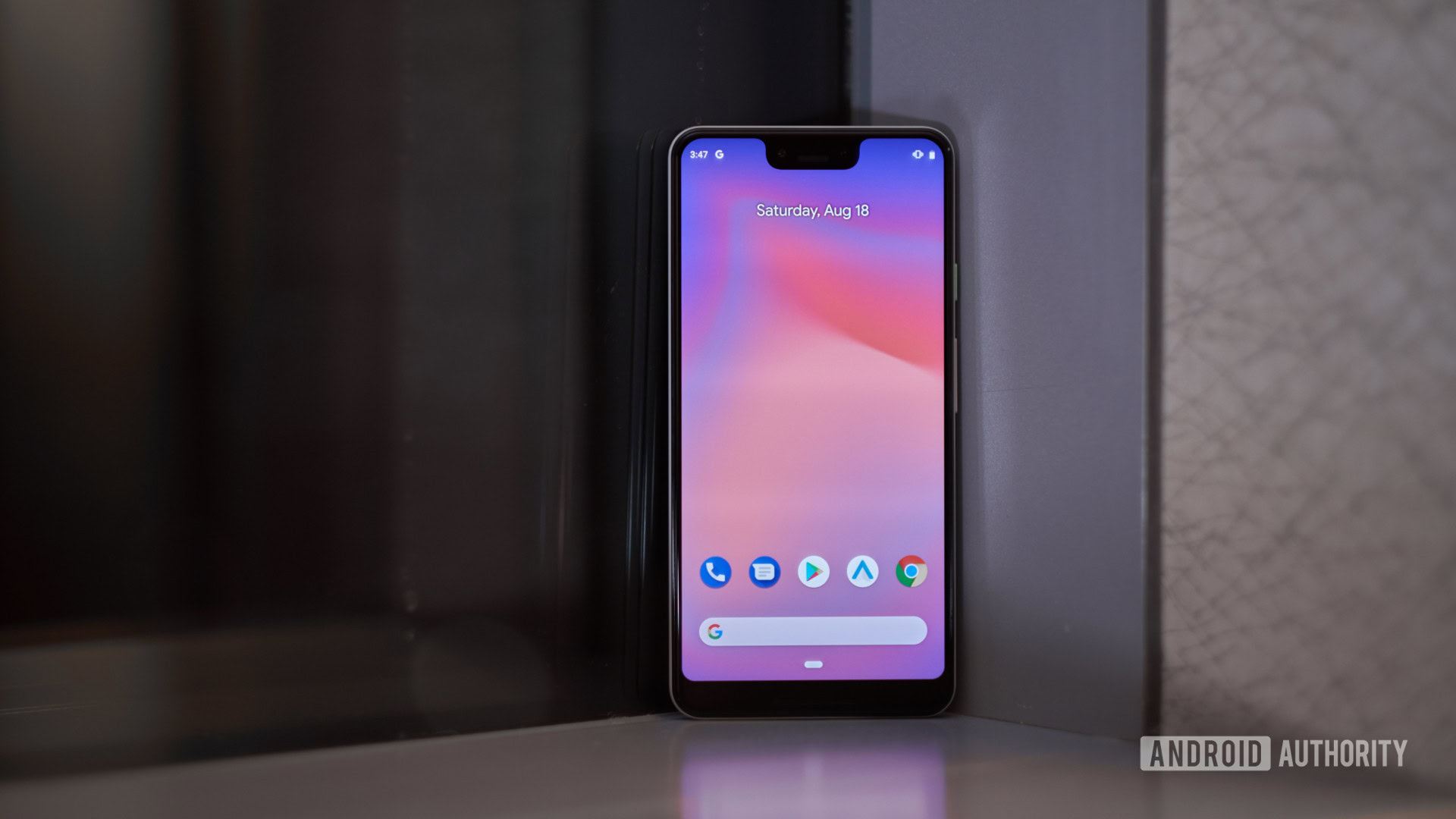
The story changes a bit when you turn to the front. Whereas the Pixel 2 and Pixel 2 XL each feature one 8MP sensor, the Pixel 3 and Pixel 3 XL each sport two 8.2MP sensors. You can use the second sensor for wide-angle selfies and to capture additional depth information for selfie portraits. We saw a similar configuration in the V40 ThinQ, so seeing a second front-facing camera on the new Pixel phones can only help.
Battery sizes are more of a mixed bag. The Pixel 3’s 2,915mAh battery is a solid increase over the Pixel 2’s 2,700mAh battery, which gave us surprising longevity. However, the Pixel 3 XL’s 3,430mAh battery is smaller than the Pixel 2 XL’s 3,520mAh battery. The Snapdragon 845’s battery optimizations might make the decrease in battery capacity a moot point, but it is always better to have a larger battery than a smaller one.
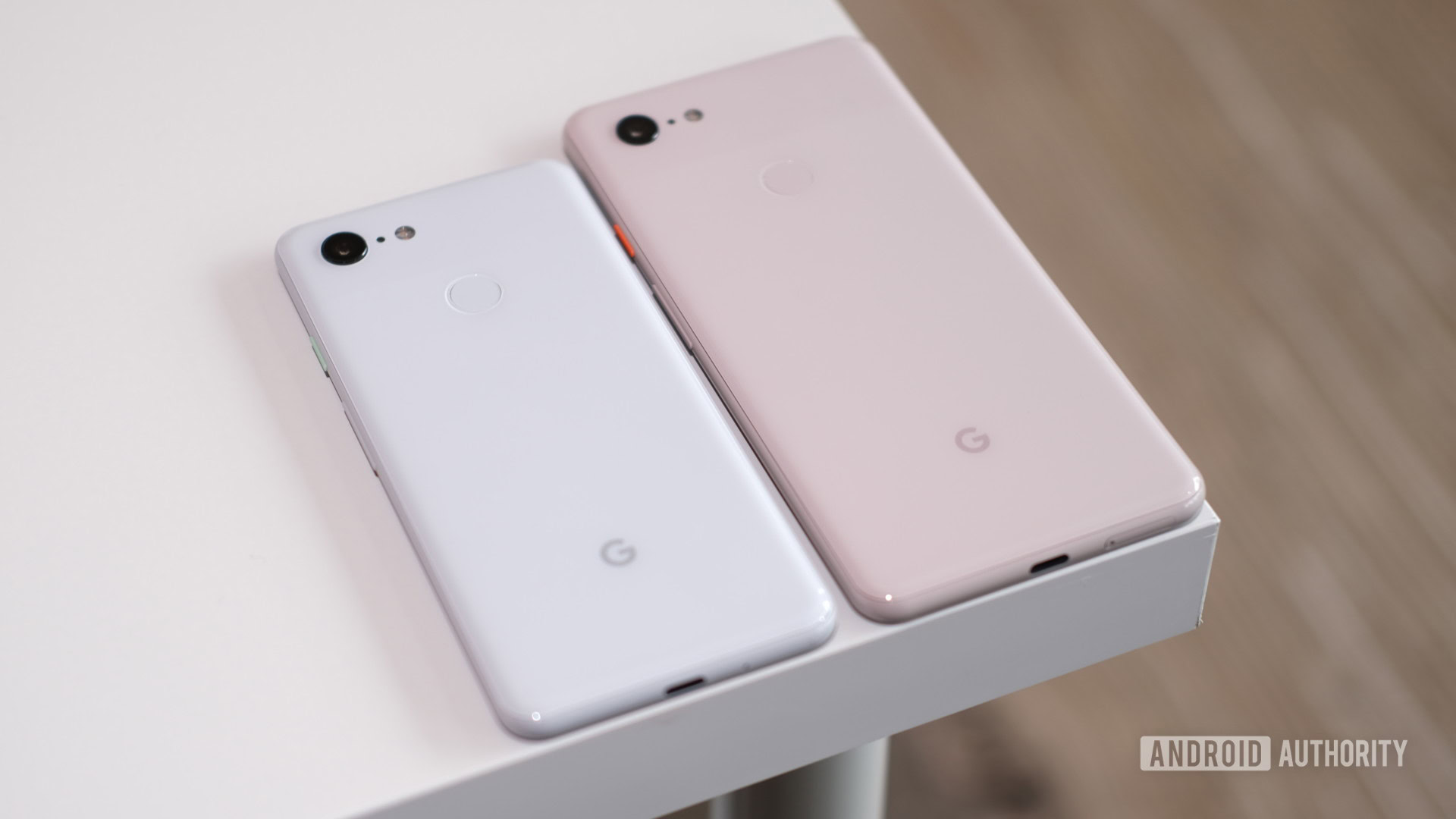
Offsetting the decreased capacity a bit is the inclusion of wireless charging for the Pixel 3 and Pixel 3 XL. All four phones feature Power Delivery through the USB Type-C port, but this is the first time since the Nexus 6 from 2014 that a Google smartphone features wireless charging.
All four Pixel smartphones feature dual front-facing speakers and Active Edge, the latter of which lets you “squeeze” the sides to bring up Google Assistant. Google claims that the Pixel 3 and Pixel 3 XL’s speakers are 40 percent louder than the Pixel 2 and Pixel 2 XL’s.
Back to the differences, the Pixel 3 and Pixel 3 XL carry slightly better IP68 ratings for water and dust resistance. The Pixel 2 and Pixel 2 XL, meanwhile, carry IP67 ratings. Whereas the older Pixel phones can be submerged in one meter of water for up to 30 minutes, the new Pixel phones can be submerged in 1.5 meters of water for up to the same amount of time.
There are even some differences in the software. The Pixel 3 and Pixel 3 XL will be the first phones to support Gmail’s Smart Compose feature. The two phones also include Call Screen, which lets the phone answer for you and transcribe the call in real time. That way, you can decide whether or not to take the call. The Pixel 3 and Pixel 3 XL will also be the first phones to support Google Duplex.
Some of these features will make their way to the other Pixel phones. All four phones also run Android 9 Pie, though the Pixel 2 and Pixel 2’s firmware upgrade support ends in October 2020. The Pixel 3 and Pixel 3 XL, meanwhile, will be supported through October 2021.
Finally, the Pixel 3 and Pixel 3 XL continue their predecessors’ footsteps and lack headphone jacks. The good news is that the new Pixel phones include USB Type-C earbuds and a headphone adapter, though you still cannot charge your phone and listen to music at the same time if you live the #wiredlife.
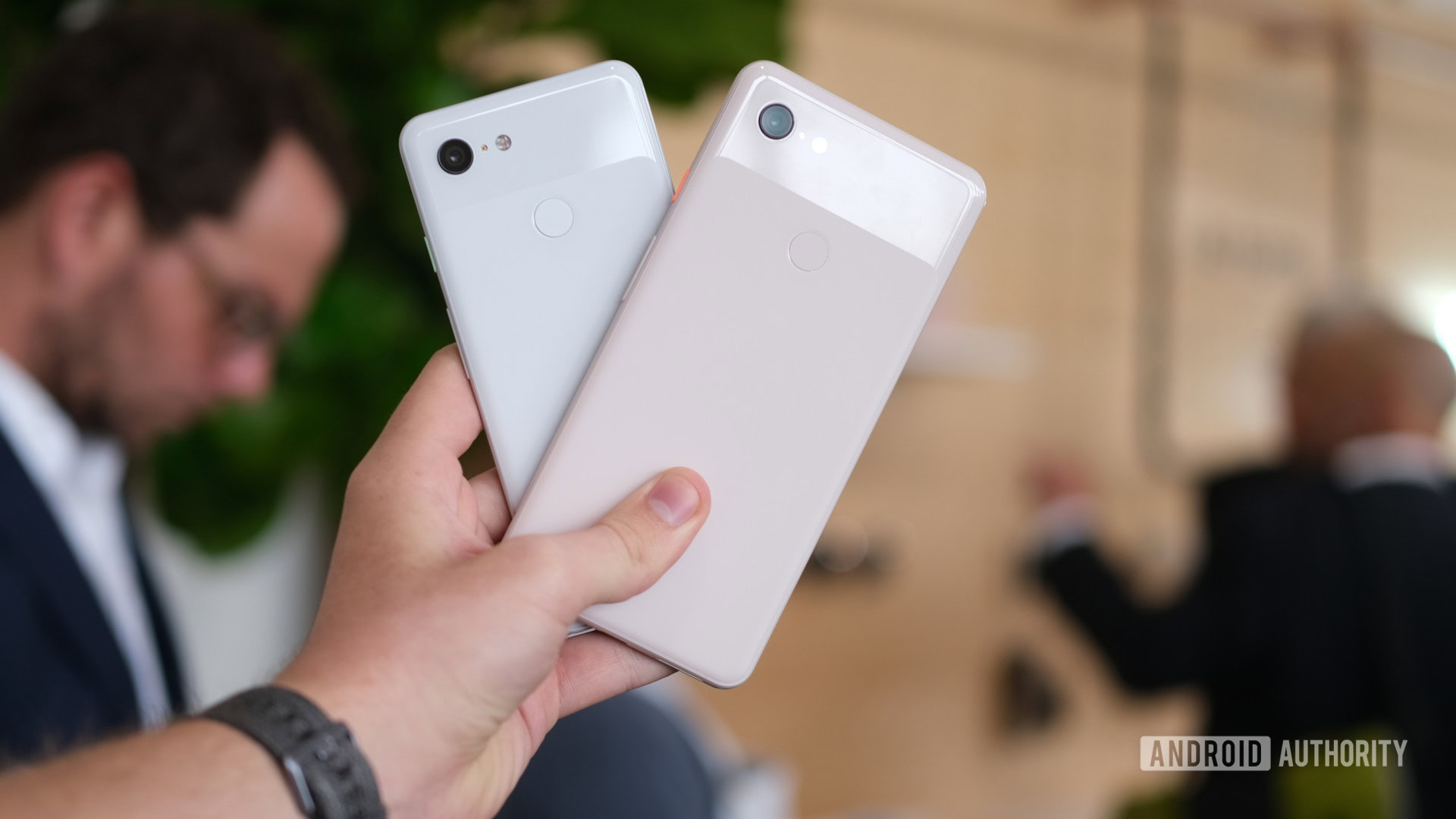
At the end, we are left with the same dilemma that we had when Google first announced the Pixel 2 and Pixel 2 XL. There is no question that, from the processors and extra front-facing camera to the inclusion of wireless charging and (hopefully) improved displays, the Pixel 3 and Pixel 3 XL are upgrades over their predecessors.
However, the software experience remains very consistent across the two previous generations of Pixel smartphones. There is no reason to believe the Pixel 3 and Pixel 3 XL will be any different. Even with the upgraded internals and new software features, the Pixel 3 and Pixel 3 XL simply act as gateways to those features, some of which will eventually trickle down.
Whether you agree or disagree with that, let us know in the comments whether you are a Pixel 2 or Pixel 2 XL owner and either plan to upgrade or keep your phone for another year. Don’t forget to also check out our coverage of the Pixel 3 and Pixel 3 XL down below.